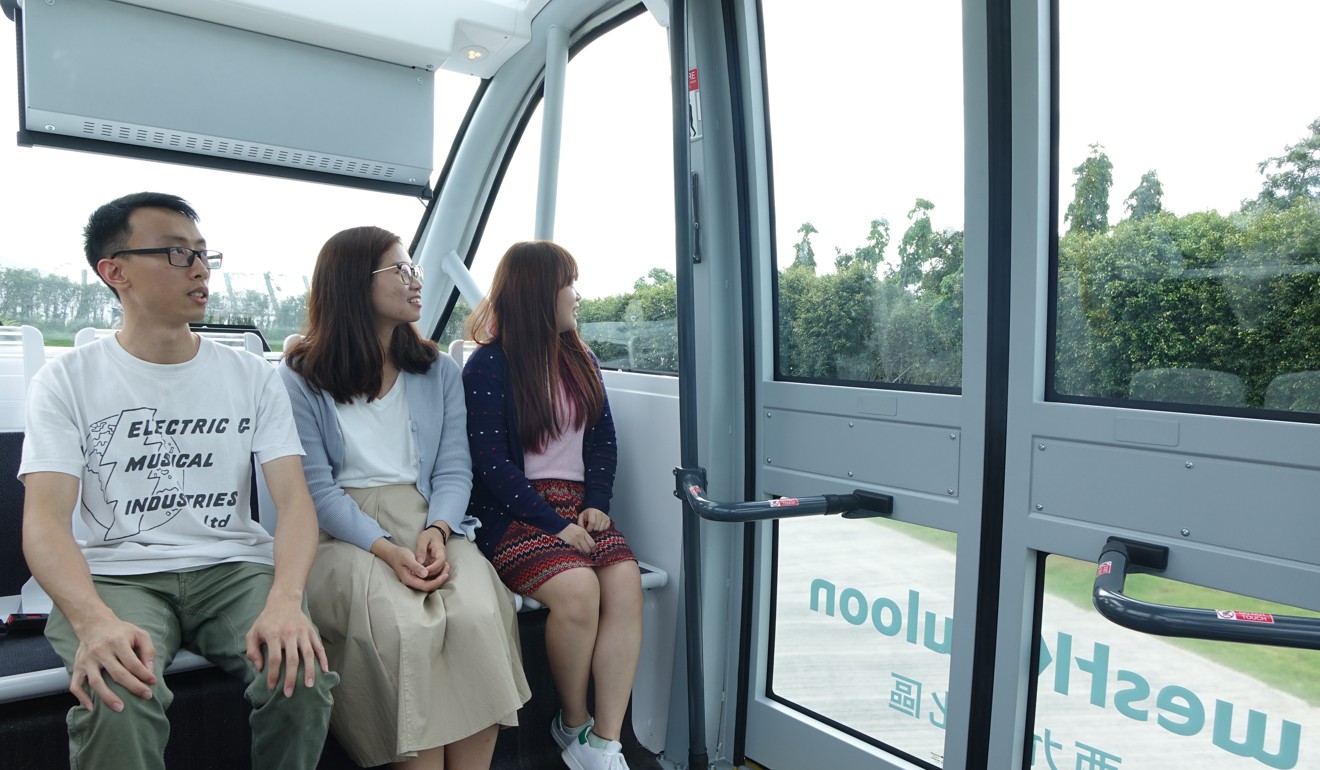
Lawmakers slam ‘unnecessary’ HK$2 million driverless car that can carry 11 people around the West Kowloon Cultural District
French-designed and manufactured self-driving vehicle expected to carry up to 11 passengers at capped speed of 15km/h around 40-hectare site in future – if approved by Transport Department
The operator of Hong Kong’s multibillion dollar arts and culture hub in West Kowloon has bought a HK$2 million autonomous car and proposes buying more as its official ground transportation vehicle, but lawmakers have criticised the idea as “unnecessary” and “expensive”.
The French-designed and manufactured self-driving vehicle is expected to carry up to 11 passengers at a capped speed of 15km/h around the 40-hectare site in future – if it is approved by the Transport Department and passes road tests.

Authority CEO Duncan Pescod said all the district’s normal vehicular traffic would be directed underground in the future.
“The avenue in the district will be the major activity spine to provide direct access throughout the district,” he said, adding that autonomous cars would enable everyone to access the district’s venues.
He said the authority would start testing one of the driverless cars it purchased sometime in the next few months.
The district will already have a complete underground transportation system able to reach all its major venues
Unlike typical shuttle cars used in tourist attractions, the Navya Arma model is equipped with sensors and other technology allowing it to detect obstacles, identify traffic and even read road signs.
Only 45 such vehicles are in operation around the world.
Lawmakers on a subcommittee that monitors the cultural project’s implementation questioned whether it was necessary to have such advanced shuttle cars paid by taxpayers.
Tanya Chan, the subcommittee’s deputy chairwoman, called the idea “stupid” and “ill-conceived” and vowed to follow it up in Legco.
“From my understanding, the district will already have a complete underground transportation system able to reach all its major venues ... If such cars have already been designed to serve the elderly and disabled, why does this have to be so expensive?”
Chan also said driverless vehicles were not permitted under the city’s current road regulations.
“I wonder if they have any idea how this issue could be fixed,” the lawmaker continued. “Does this mean the Hong Kong government needs to change its regulations just for these cars? Do they even know if it would work in future?”
An authority spokeswoman said it had obtained a temporary permit from the Transport Department to carry out driving tests.“It is envisaged that, at a later stage in the testing, visitors to the district may have a chance to experience a ride on this autonomous vehicle upon approval from relevant government departments,” the authority said in a statement.
It remained unclear whether the ground transportation service would be provided free of charge and when it might be rolled out.

